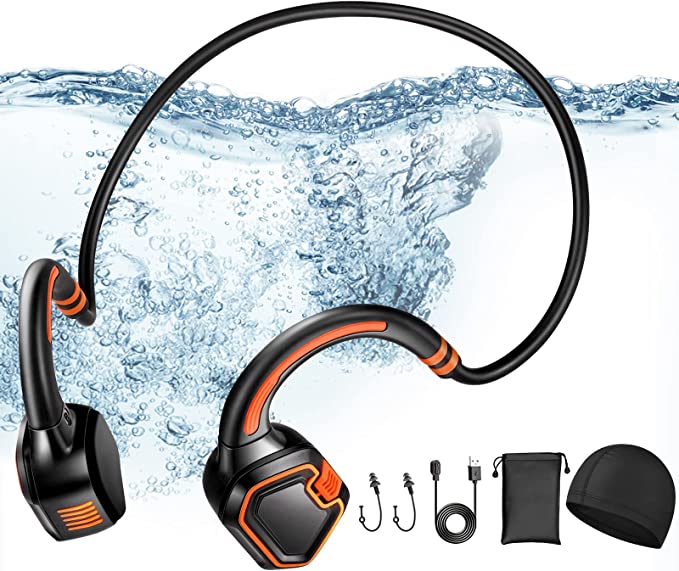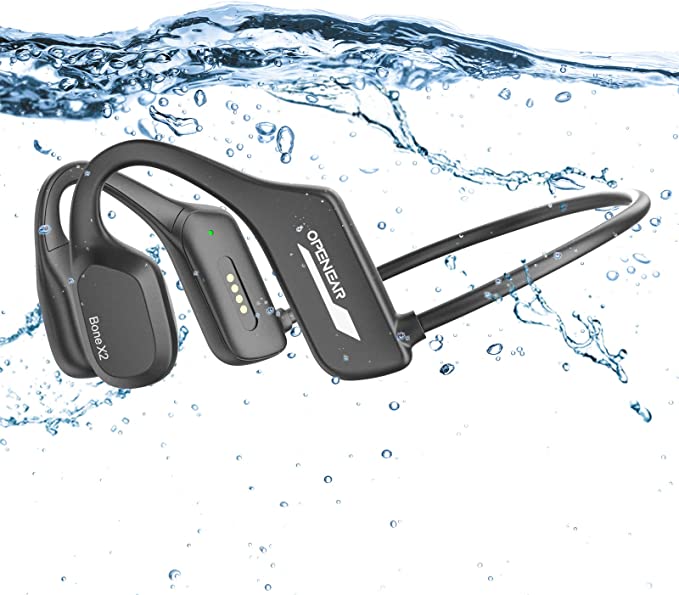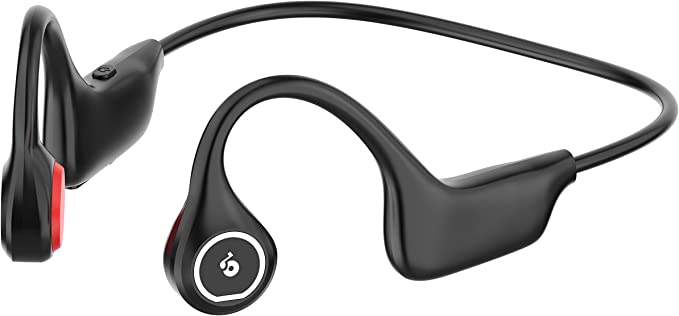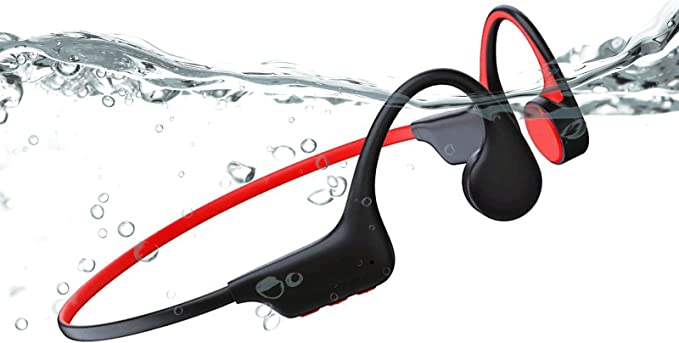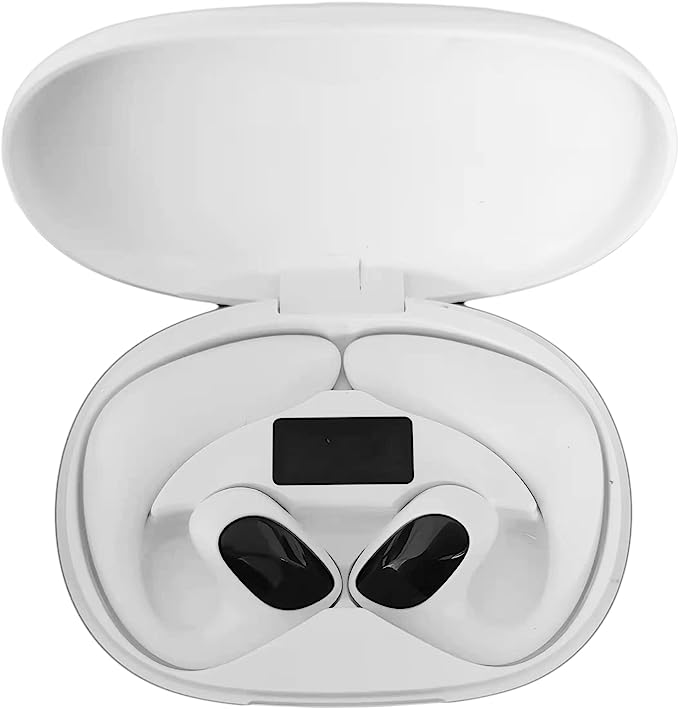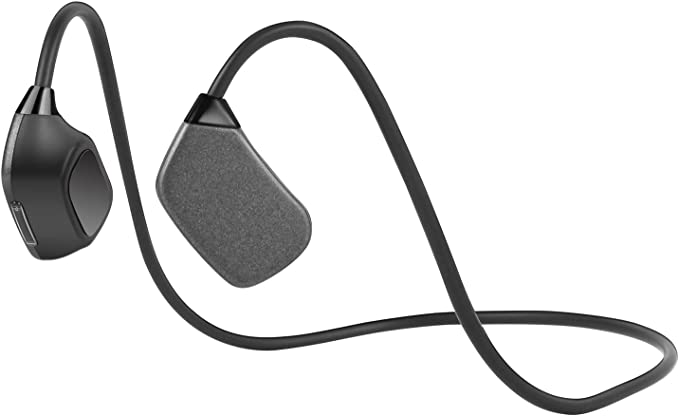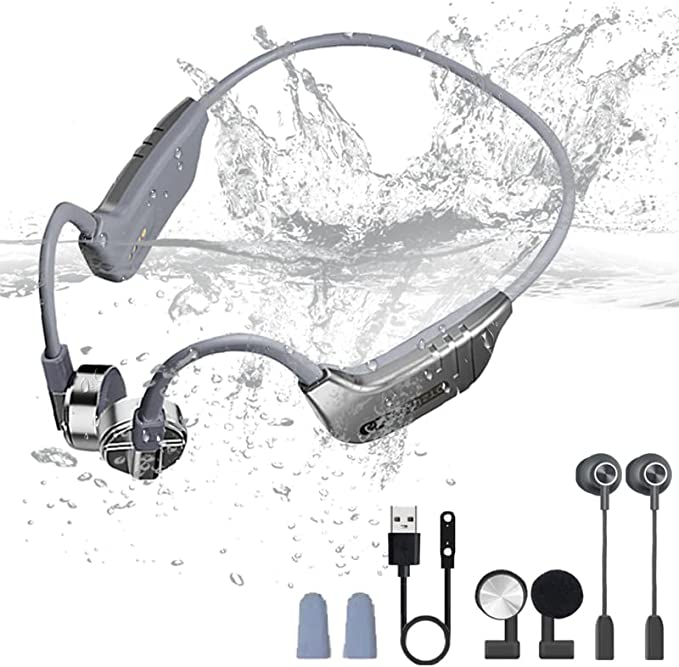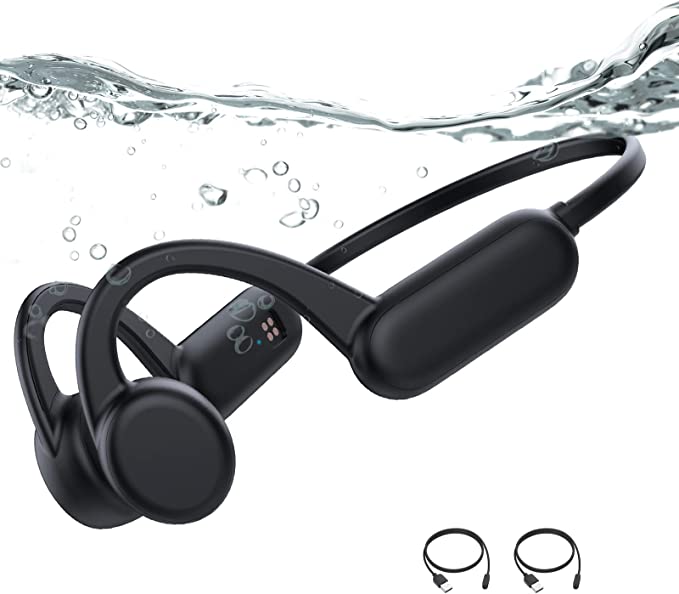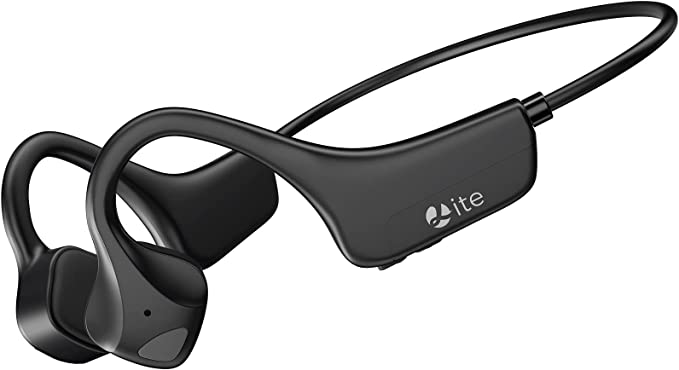Dnniakm X6 Bone Conduction Headphones: Dive into Sound with Open-Ear Freedom
Update on July 23, 2025, 6:57 p.m.
Legend has it that in his later years, as the world of sound faded into silence, Ludwig van Beethoven found a way to hear his piano. He would bite down on a metal rod pressed against the instrument, allowing the vibrations to travel not through his failing ears, but through his jawbone, directly to the nerves of his inner ear. In that moment, he was experiencing the primal magic of bone conduction. It was a composer’s desperate hack, a private miracle that hinted at a fundamental, often-overlooked truth about our senses: there is more than one way to hear.
Today, that same principle, refined by over a century of science and engineering, has re-emerged from the worlds of medical science and military communications to find a new home wrapped around the heads of swimmers, runners, and cyclists. It’s the core technology inside devices like the Dnniakm X6, which promise not just music, but a revolutionary way of experiencing sound without shutting out the world. This isn’t just another headphone; it’s the modern echo of Beethoven’s rod, a tool that opens up a second, unheard symphony.

The Highway and the Secret Path
To understand the marvel of bone conduction, we must first appreciate the journey sound usually takes. This is air conduction, the main highway of our hearing. Sound waves, which are vibrations traveling through the air, are funneled by our outer ear into the ear canal. They strike the eardrum, causing it to vibrate. These delicate vibrations are then amplified by a series of three tiny bones in the middle ear—the ossicles—before being passed to the fluid-filled, snail-shaped cochlea in our inner ear. Here, the mechanical vibrations are finally converted into electrical signals that the auditory nerve sends to our brain.
Bone conduction, however, is the secret path. It bypasses the eardrum and middle ear entirely. Instead of relying on air, it uses your own body as the transmission medium. The transducers in bone conduction headphones rest on your cheekbones, converting audio signals into subtle vibrations. These vibrations travel through the solid structure of your skull directly to the same inner ear, the cochlea. Your brain doesn’t care how the signal arrived; it processes the vibrations into the same rich experience of sound.
The most profound consequence of taking this secret path is that the main highway—your ear canal—remains completely open. You can be lost in a podcast or a driving beat while still hearing the chirp of a bird, the whir of a passing car, or a teammate’s call. This is situational awareness, and it represents a paradigm shift from the isolating bubble of traditional headphones to an integrated, layered audio reality.

Engineering Against the Elements
The true test of any technology is how it performs under pressure. For personal audio, there is no greater adversary than water. It is here that the Dnniakm X6 reveals itself not just as a listening device, but as a marvel of purpose-built engineering, designed to win a battle against the laws of physics.
The first line of defense is its IP68 rating. This code, defined by the International Electrotechnical Commission’s standard IEC 60529, is an uncompromising declaration of durability. The ‘6’ certifies that the enclosure is completely sealed against dust ingress. The ‘8’ is the crucial part for swimmers: it guarantees protection against continuous immersion in water under conditions specified by the manufacturer, typically beyond one meter. This level of waterproofing isn’t achieved by accident. It requires seamless construction and the elimination of weak points—which is why the headphones utilize magnetic charging. A traditional USB port is a gaping invitation for water damage; a magnetic connection creates a secure, hardware-level seal every time.

But even with a perfect seal, a greater physical challenge remains: getting the signal underwater. Anyone who has tried to use Bluetooth headphones in a pool knows the frustration. The music stutters and dies the moment your head is submerged. This isn’t a flaw in the headphones; it’s a fundamental principle of physics. The 2.4 GHz radio waves that Bluetooth relies on are voraciously absorbed by water molecules. Water is to Bluetooth what lead is to X-rays—a near-impenetrable barrier.
So how do engineers deliver a symphony in a place where radio signals fear to tread? They don’t try to fight the physics of water; they simply go around it. The Dnniakm X6 incorporates a 32GB built-in MP3 player. This transforms the headphones from a simple receiver into a self-contained, waterproof music player. By loading your music directly onto the device, you sever the need for that fragile wireless tether. It’s an elegant solution that acknowledges the limits of one technology by seamlessly integrating another, creating an uninterrupted personal soundtrack for the swimmer.

The Sensation of Sound and Freedom
Using bone conduction is a unique sensory experience. Many users report that music sounds richer and louder underwater. This isn’t an illusion. It’s another trick of physics related to acoustic impedance. Because water is far denser than air, it’s a much more efficient medium for transmitting the headphone’s vibrations to your skull, resulting in a more powerful perceived sound.
On land, the technology’s gift is freedom. For a runner or cyclist, the ability to hear an approaching vehicle is not a luxury; it’s a necessity. The open-ear design provides a constant, life-saving audio feed from your environment. It dissolves the dangerous choice between motivation and safety.

Ultimately, the journey of bone conduction from a deaf composer’s workaround to a high-tech athletic tool is a story about human ingenuity. It’s about our refusal to accept limitations, whether they are the silence of a failed ear or the signal-blocking physics of water. Devices like the Dnniakm X6 are more than just gadgets; they are our second pair of ears, allowing us to layer our digital lives onto our physical world without losing touch with either. They let us listen to the unheard symphony—the one playing in our heads, and the equally important one playing all around us.




